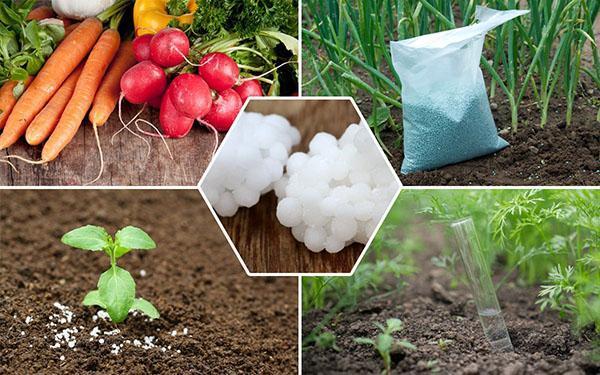Mineral fertilizer urea - the third hand of the farmer
 Highly efficient, granular and universal mineral fertilizer - urea. Only a correctly calculated dosage, as well as competent application of urea, promotes active plant growth. In addition, the farmer receives abundant fruiting, and subsequently a luxurious harvest. Moreover, the cost of the drug is not high, so everyone can afford to buy it. It is sold in all specialized stores.
Highly efficient, granular and universal mineral fertilizer - urea. Only a correctly calculated dosage, as well as competent application of urea, promotes active plant growth. In addition, the farmer receives abundant fruiting, and subsequently a luxurious harvest. Moreover, the cost of the drug is not high, so everyone can afford to buy it. It is sold in all specialized stores.
You should not aimlessly scatter snow-white granules all over the garden. It is proved that in the process of their splitting, ammonium carbonate is formed. It, in turn, instantly disintegrates under the influence of oxygen.
We make the correct diagnosis
Before you start applying a mineral fertilizer such as urea, it is important to make sure your garden crops are in fact nitrogen deficient. After all, the unsightly appearance of individual specimens may indicate a lack of iron. The following tips will help to make the correct diagnosis for your "wards":
- There are no clear signs of growth.
- The foliage is getting smaller. At the same time, it changes its color to pale green, yellow and is partially covered with beige spots. A little later it falls off altogether.
- Trees / shrubs produce thin shoots.
- The flower buds are completely underdeveloped. Their number is significantly reduced.
Iron starvation is accompanied by yellowing of young leaves, and not those that are in the lower part of the branch. However, they look drooping in the daytime. These differences are important to consider.
Mineral fertilizer urea: keep pace with the instructions
Literally in 3-5 days, carbamide will change in the soil. This time is enough for the bacteria to break it down into nutrients. As a result of this reaction, ammonium carbonate is formed, which promotes the efficient assimilation of nitrogen compounds. Under no circumstances should the gas come into contact with oxygen, otherwise it will simply evaporate. Therefore, it is recommended to immediately embed the fertilizer into the soil.
Urea essentially acidifies the earth. Because of this, some agronomists add alkaline substances to feeding. One of them is limestone. Each component is taken in a 1: 1 ratio. Others, though, believe that alkali will neutralize the action of the acid.
A single plant needs varying amounts of carbamide. Therefore, agricultural technicians unanimously insist that it should be applied in individual doses, taking into account the needs of the culture.
On the packaging, grams are always indicated, but, unfortunately, there are no weights at hand in the garden. So, it is worth taking into account that 1 tbsp. l. holds 10 gr. mineral fertilizer of urea, and an ordinary glass - 130 gr. Now you need to remember how much of it is needed for specific varieties (the calculation is given in g / 1m²):
- Root vegetables (beets, potatoes, onions and garlic), as well as cabbage, tomatoes and peppers: 20-25.
- Cucumbers with peas: 5-10.
- Strawberry or strawberries: 10 by 2 liters. Spray method is used.
- Apple trees: 200. Plum or cherry: 120.
- Zucchini, squash and eggplant: 10-15.
Top dressing is carried out twice during the entire growing season. The first application falls on planting, and the second - during fruit setting. Cereals will need to be brought in up to 300 gr. / Weave. If you adhere to such recommendations, then you will then have to treat all your neighbors with the harvest.